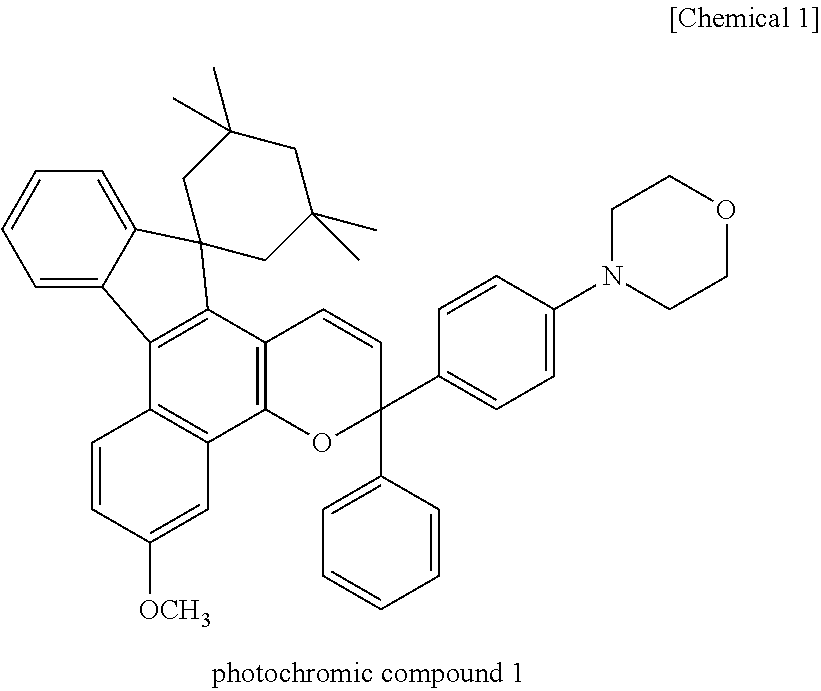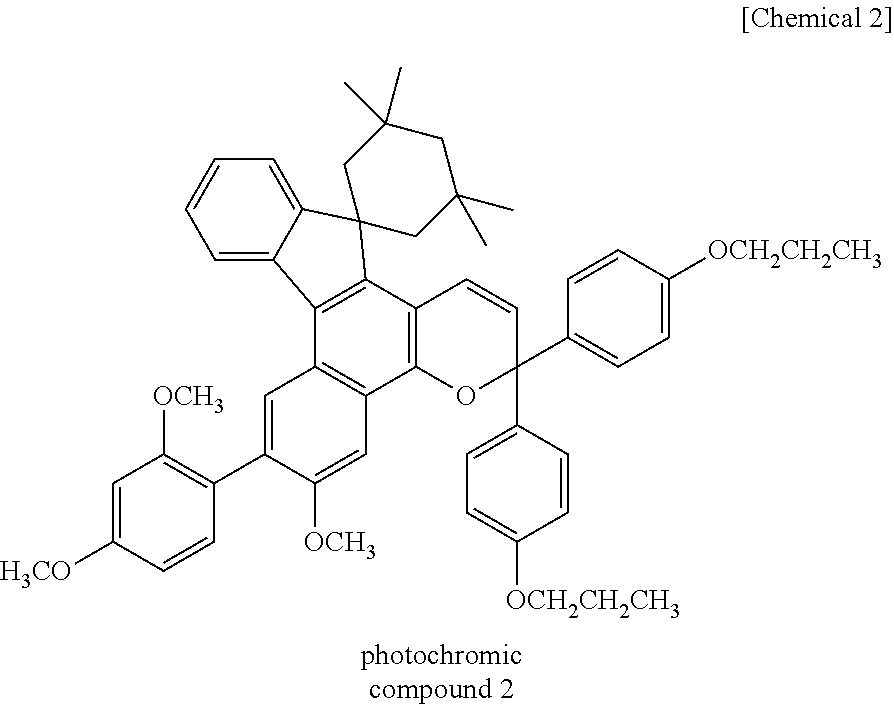Coating composition
a technology of coating and composition, applied in the field of coating composition, can solve the problems of reducing productivity, inability to closely adhere to the plastic substrate, and inherently lacking the adhesion property of hard coating, so as to improve the resistance to hot water, prevent the occurrence of cracks effectively, and improve the effect of thermal hysteresis
- Summary
- Abstract
- Description
- Claims
- Application Information
AI Technical Summary
Benefits of technology
Problems solved by technology
Method used
Image
Examples
example 1
[0159]An optical substrate (lens material) AC2 having a thickness of about 2 mm was dipped in an aqueous solution containing 20% by mass of sodium hydroxide maintained at 60° C., and was etched with an alkali for 10 minutes by using an ultrasonic washing device.
[0160]After the etching with alkali, the optical substrate was washed with tap water and with distilled water maintained at 50° C. successively so that the remaining alkali component was removed. After that, the optical substrate was left to stand for about 10 minutes until it was cooled down to room temperature. The lens material was dip-coated with the coating composition 1 at 25° C. and at a pull-up rate of 20 cm / min.
[0161]Thereafter, the optical substrate (lens material) was pre-cured in an oven heated at 70° C. for 15 minutes and was, thereafter, cured at 110° C. for 2 hours to obtain an optical article (lens with hard coating) having a hard coating of a thickness of 3.0 μm formed on both surfaces of the optical substrat...
examples 2 to 29
, Comparative Examples 1 to 9
[0187]Plastic lenses having hard coatings were prepared by applying the coating compositions shown in Tables 1 to 3 onto the optical substrates (lens materials) shown in Tables 4 and 5 in the same manner as in Example 1 but varying the pre-treating conditions, and were evaluated. The results of evaluation were as shown in Tables 4 and 5.
[0188]The lenses using AC2 as the optical substrate which has the photochromic layer were evaluated for their weather-proof properties, too.
TABLE 4Pre-treatmentInitialBoilingCompositionmaterialAlkali conc. / temp. / time(1)(2)adhesionadhesionΔYIEx. 1Composition 1AC220% NaOH / 60° C. / 5 min.∘A100 / 1003 hours2.0Ex. 2Composition 2AC220% NaOH / 60° C. / 5 min.∘A100 / 1005 hours2.2Ex. 3Composition 3AC220% NaOH / 60° C. / 5 min.∘B100 / 1005 hours2.5Ex. 4Composition 4AC220% NaOH / 60° C. / 5 min.∘C100 / 1005 hours2.7Ex. 5Composition 5AC220% NaOH / 60° C. / 5 min.∘C100 / 1005 hours3.0Ex. 6Composition 3AC120% NaOH / 60° C. / 5 min.∘B100 / 1005 hours—Ex. 7Composition 1...
examples 30 to 72
[0199]Plastic lenses having hard coatings were prepared by applying the coating compositions shown in Table 6 onto the optical substrates (lens materials) shown in Tables 7 and 8 in the same manner as in Example 1 but varying the pre-treating conditions, and were evaluated. The results of evaluation were as shown in Tables 7 and 8.
[0200]The lenses using AC2 as the optical substrate which has the photochromic layer were evaluated for their weather-proof properties, too.
TABLE 7LensAlkaliInitialBoilingCompositionmaterialconc. / temp. / time(1)(2)adhesionadhesionΔYIEx. 30Composition 23CR 5% NaOH / 60° C. / 5 min.∘A100 / 1005 hours—Ex. 31Composition 23MRA10% NaOH / 60° C. / 5 min.∘A100 / 1005 hours—Ex. 32Composition 23MRB10% NaOH / 60° C. / 5 min.∘A100 / 1005 hours—Ex. 33Composition 23TE20% NaOH / 60° C. / 5 min.∘A100 / 1005 hours—Ex. 34Composition 23AC120% NaOH / 60° C. / 5 min.∘A100 / 1005 hours—Ex. 35Composition 23AC220% NaOH / 50° C. / 5 min.∘A100 / 1005 hours2.3Ex. 36Composition 24CR 5% NaOH / 60° C. / 5 min.∘A100 / 1005 hours—...
PUM
| Property | Measurement | Unit |
|---|---|---|
| particle size | aaaaa | aaaaa |
| temperature | aaaaa | aaaaa |
| temperature | aaaaa | aaaaa |
Abstract
Description
Claims
Application Information
 Login to View More
Login to View More - R&D
- Intellectual Property
- Life Sciences
- Materials
- Tech Scout
- Unparalleled Data Quality
- Higher Quality Content
- 60% Fewer Hallucinations
Browse by: Latest US Patents, China's latest patents, Technical Efficacy Thesaurus, Application Domain, Technology Topic, Popular Technical Reports.
© 2025 PatSnap. All rights reserved.Legal|Privacy policy|Modern Slavery Act Transparency Statement|Sitemap|About US| Contact US: help@patsnap.com


